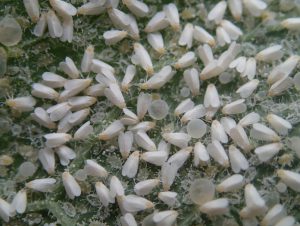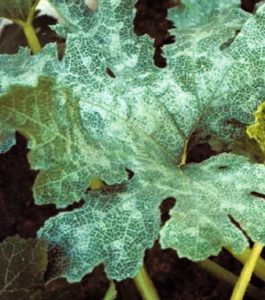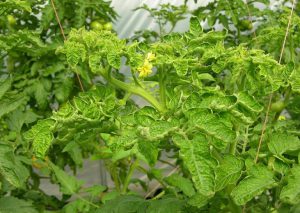Another hot Florida summer has arrived, and with the heat comes peak pest season. During our regular scouting and gardening here in the Biosecurity and Extension Lab, we have noticed an increase in whitefly populations. These are highly polyphagous insects, so you have a good chance of spotting them no matter what crop you grow.

Adult whiteflies are tiny flying insects covered in a white waxy powder. You may notice them crawling on the undersides of leaves. They have piercing-sucking mouthparts which they use to feed on plant tissues. Feeding damage results in yellow or silver spots on the leaf surface, and heavy infestations may result in severe wilt and defoliation. Whiteflies are also important virus vectors that transmit Tomato Yellow Leaf Curl virus (TYLCV). The honeydew they produce promotes sooty mold growth and ant infestations.


While all whiteflies cause economic damage, the silverleaf whitefly (Bemesia tabaci) is the most significant whitefly in Florida. Silverleaf whitefly has multiple biotypes, which are genetic variations of the same species. The Q-biotype is of particular concern to Florida growers due to its high pesticide resistance. The Q-biotype whiteflies are indistinguishable from the B-biotype, which is not a pesticide resistant biotype. The only way to differentiate the two biotypes is with molecular methods. If you want to learn more about the biotypes of Bemesia tabaci, visit this website by Dr. Lance Osborne.
You can find more information on whitefly biology and management in this EDIS document. There are also more great photographs of multiple whitefly species and all their life stages on this website by Dr. Lance. Osborne.
 0
0
